
 |
|
|
#191 |
|
Helper EcoRenovator
Join Date: Sep 2010
Posts: 66
Thanks: 6
Thanked 2 Times in 2 Posts
|
Yea, I was using two wrenches. I guess I have no confidence in the ladder.. it moved too much. Need someone on the ground level to hold still as much as possible. Good idea on the drain hose ... will test it tomorrow. I have a HVAC guy coming this sat to check out the work and see if he needs to correct anything I did.. Did you use your paintball tank to pressure test your system? I got a few bottle sitting around.. what kind of adapter do you need? and where can I get one?
thanks |
|
|

|
|
|
#192 |
|
Lex Parsimoniae
Join Date: Feb 2009
Location: Woburn, MA
Posts: 4,918
Thanks: 114
Thanked 250 Times in 230 Posts
|
I have a regulated paintball tank with a PB fill adapter, (PB shop)
and I made a kludge adapter, so I could hook up my 410A manifold. Maybe I'm wrong, and didn't really have to make an adapter.. Since the fittings used to screw hoses onto paintball gear (1/8" NPT) are the same size size as those tapped holes in my manifold.?. If they are the same size, I could have just screwed a short PB hose into the Fill Adapter and put the other end into one of the un-used (plugged) holes on ends of my manifold.!. I have a spare brass manifold fitting in a storage box somewhere, and I can check it out if you want me to. 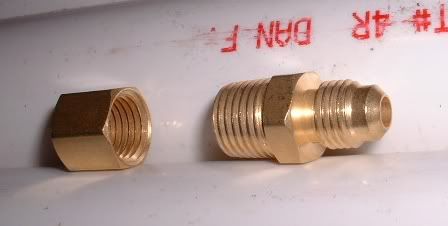 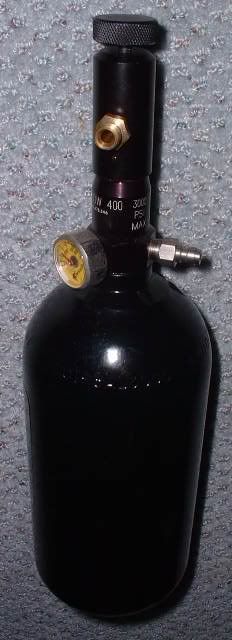 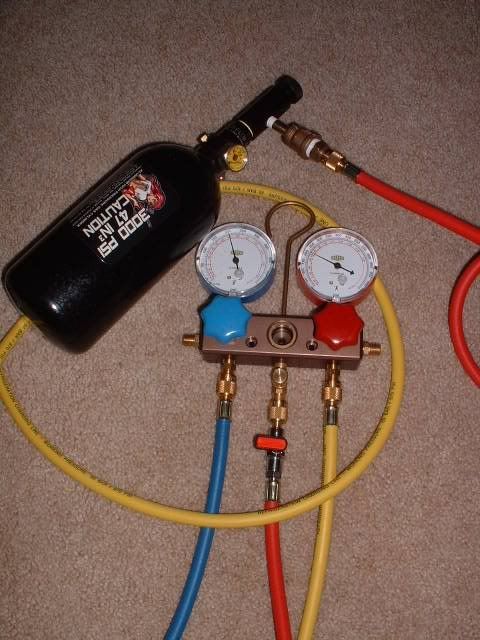 Last edited by Xringer; 10-06-10 at 11:14 PM.. |
|
|

|
|
|
#193 | |
|
Supreme EcoRenovator
Join Date: Mar 2009
Location: Portland, OR
Posts: 4,004
Thanks: 303
Thanked 723 Times in 534 Posts
|
Quote:
Using 'warm wall' design considerations should be very useful for sizing your mini-split. I have been very satisfied with my unit (9000 BTU Sanyo). I didn't do a lot of formal analysis when purchasing it, but I had been logging zoned energy use in my house for a couple of years, so I had a very informed intuition about how it would work out. I know that there are many different units out there, with different HSPF ratings and the higher the rating, the higher the purchase price. I was considering buying a mini-split for my basement workshop, which I use very irregularly. I did a rough break-even analysis and realized that the higher HSPF units would not pay back in a reasonable timespan. I compared the cheapest non-inverter mini-split to several inverter types and because my use of the workshop area was so infrequent, the cheapo penciled out better. But again, this was because my use was so infrequent. If you use your like Xringer, and it's running 24/7, the decision shifts toward more efficient units. The upshot is that I use a 220V resistance fan heater, which just gobbles up power, but as I said the use is infrequent, maybe an hour or two a week. I also did a CO2 output comparison for all of the units I was considering, and the highest HSPF was the clear winner in all cases. So, I think that it'll always comes down to ethics v. money, and the choice can be very poignant. If you haven't already, you should pencil out the comparisons for your situation, it's very enlightening. Best of luck on your project, benpope! Regards, -AC_Hacker Last edited by AC_Hacker; 10-07-10 at 12:29 AM.. |
|
|
|

|
|
|
#194 |
|
Helper EcoRenovator
Join Date: Sep 2010
Posts: 66
Thanks: 6
Thanked 2 Times in 2 Posts
|
Where did you get the manifold fitting?.. I will try to hit lowes and home depot tomorrow. I also have to find a paintball refill station. I guess co2 is out of the question.. have to compressed air.
Can I just do a vacuum pull and see if there is any drop in pressure. I am getting a micron gauge (exactly like yours). I can leave it for a few days since temp should not affect the reading.. (I am guessing) I can see whether there is a leak or not.. in this case the bubble solution will not work. |
|
|

|
|
|
#195 |
|
Lex Parsimoniae
Join Date: Feb 2009
Location: Woburn, MA
Posts: 4,918
Thanks: 114
Thanked 250 Times in 230 Posts
|
When I got my manifold, one of the nipples had some damage, so the Ebayer sent me a new one.
(The one in the top pic above). I think that I've seen them in the local AC shop.. Never use CO2, it's a liquid under pressure, and when warmed up it can go well over 900 PSI. Use dry air or nitrogen from your local paint ball shop. Nitrogen is best. If your pressure test is good, then the vacuum test should be good also. Just remember that when it gets cold, the nitrogen pressure will drop a little. If you can wait until it warms up, your pressure should slowly come back. When you are done, bleed down the nitrogen to about 15 or 20 PSI. Let that remain inside until you are ready to vacuum the lines. You want to keep atmospheric air (in lines and hoses) to a minimum. When pumping a vacuum, if it's cool outdoors and there is some moist air in your lineset when you start, you will have to pump it out, then hold and repeat a few times before all the moisture (or ice) is removed. The ability to hold a good vacuum will depend on your hoses and pump connections. I had little cut-off valves in my manifold hoses and when you turned one off or on, it would leak just a little. I think some hoses allow tiny amounts of air to bleed in, and that lowers the quality of your vacuum.. Play around with your pump and gauges to get familiar with them. After you run your pump and watch the micron gauge for a while, you will get a feel of what your pump is capable of, and how it reacts when you shut it down to hold a vacuum. |
|
|

|
|
|
#196 |
|
Helper EcoRenovator
Join Date: Sep 2010
Posts: 66
Thanks: 6
Thanked 2 Times in 2 Posts
|
I tried just about all the places around me to look for the brass manifold fitting...
If you have a spare, can I purchase it from you.. Really appreciated... |
|
|

|
|
|
#197 |
|
Lex Parsimoniae
Join Date: Feb 2009
Location: Woburn, MA
Posts: 4,918
Thanks: 114
Thanked 250 Times in 230 Posts
|
If they are 1/8" NPT, you could just steal one of the fittings off your manifold..
For pressure testing or pulling a vacuum, you will never need all three hoses on a 3 hose manifold. If you don't want to use the manifold cut-off valve, you can find a plug for the 1/8" NPT hole at Lowes. Maybe a 1/8" NTP brass nipple and a cap for one end.. The last time I did the vacuuming, I only used one hose. Found a short hose at the local AC shop. Hey!! I have two plugged up fittings on my manifold.. I could have just removed one and screwed in the hose from my PB tank.!. Now, I think of it!! 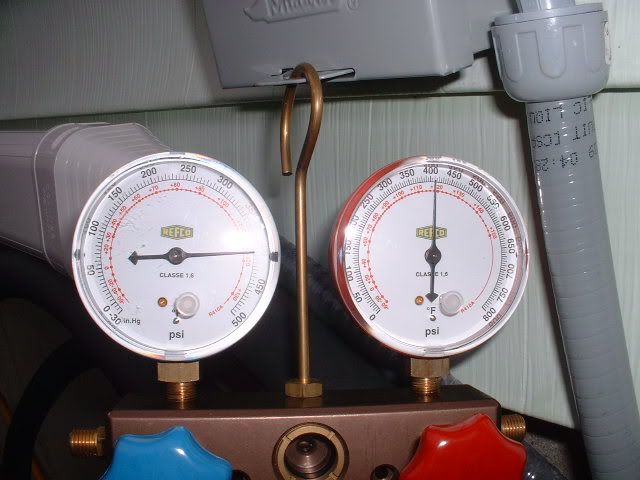 |
|
|

|
|
|
#198 |
|
Lurking Renovator
Join Date: Oct 2010
Posts: 1
Thanks: 0
Thanked 0 Times in 0 Posts
|
Hello:
I just joined this group and am considering installing two multi-splits at our house. We had been planning in radiant heat with one of the new low temperature heat pumps from Daikin.. but the price is stratospheric, as yet. Does anyone have suggestions about placement of the interior units? I realize it's hard to give specific advice -- what I'm wondering about are general principles. I noticed earlier in this thread that AC_Hacker said the units look better, or less bad (  ) over windows or doorways. I can see that. Ok to heat a 25 x 15 living room from one side? Or perhaps with a ceiling unit? ) over windows or doorways. I can see that. Ok to heat a 25 x 15 living room from one side? Or perhaps with a ceiling unit?If I can convince my S.O. that the interior units don't look too bad, then I'm going to install two of these for our two story house -- they sound great! |
|
|

|
|
|
#199 |
|
Lex Parsimoniae
Join Date: Feb 2009
Location: Woburn, MA
Posts: 4,918
Thanks: 114
Thanked 250 Times in 230 Posts
|
Welcome aboard! I think you are going to enjoy your new ASHPs..
 You need a good solid wall with some studs you can use  to hold the install plate.  It's good if it can be in an open living area. I mounted mine a bit lower than normal. The standard is to mount an AC unit up high. But, this is also a heater. So (IMHO) what does it matter if it's a little lower? It might be a problem if you mounted it close to the floor, near your eating area. In the summer, cold air would be hitting your legs and feet..  It's a big plus, if it has a direct shot at a hall way, leading to other rooms.  That door on the left is the master bedroom. That space heater on the floor is in storage.. Anyways, my wife wanted to spruce up the house a little.. And the Sanyo is still looking a little odd up there on the wall.. 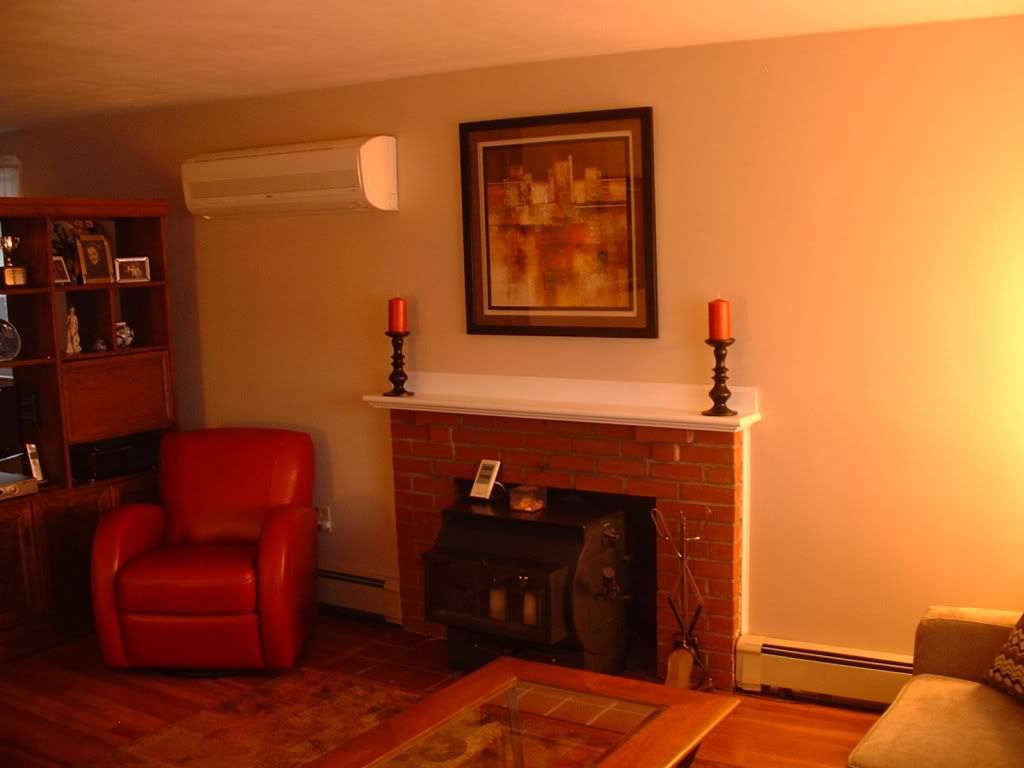 It's still being tweaked, this is an older pic.. Anyhow, it was a real hard sell to get this thing on the wall to start off with. Took me about a year to sell the idea. And when it came out of the carton, she said Eeek!! It looked really big.. Even to me!! But, now that it's been running a while (most of one winter and all of one summer), she is LOVES it!! Does not care if it doesn't look like the AC-Heating systems up the street.. Could care less.. The performance of this thing is fantastic. That overrides it's slightly odd look.. Now, when we go into a restaurant or public building with a mini-split hanging on the wall, she points it out, smiling all the while..  |
|
|

|
|
|
#200 |
|
Lex Parsimoniae
Join Date: Feb 2009
Location: Woburn, MA
Posts: 4,918
Thanks: 114
Thanked 250 Times in 230 Posts
|
"Or perhaps with a ceiling unit?"
I've looked at these units and found the cost a good bit higher. And, it seems like the size and shape of the ceiling box is so different, I can't see how it's going to have the same performance as the wall units. It seems like it's going to make more noise, due to small input-output ports. And, it's hardware (and coil) is going to be in your attic. Super cold in the winter and super hot in the summer. I don't think it's going to have the same BTUs per watt. These are my theories, and not based on actual testing.. |
|
|

|
 |
| Tags |
| air conditioner, diy, heat pump |
| Thread Tools | |
| Display Modes | |
|
|